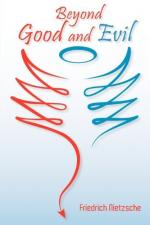
|
| Name: _________________________ | Period: ___________________ |
This test consists of 15 multiple choice questions and 5 short answer questions.
Multiple Choice Questions
1. What type of person does the author refer to as being moralistic?
(a) Pedant.
(b) Student.
(c) Father.
(d) Child.
2. Nietzsche condemns the woman who seeks to enlighten men and to become what?
(a) Self-reliant.
(b) Forthright.
(c) Wise.
(d) Equal.
3. It is most likely that even in a modern age, one may still possess which of the following:
(a) Virtues.
(b) Beliefs.
(c) Morals.
(d) Judgments.
4. Who was the first person to receive a copy of "Aftersong?"
(a) Von Trapp.
(b) Van Holstein.
(c) Von Stein.
(d) Van Helsing.
5. What is a most difficult thing to be understood by a man that is noble?
(a) Servitude.
(b) Sacrifice.
(c) Faithlessness.
(d) Vanity.
6. What is the basic difference between these two groups?
(a) Ability to take action.
(b) Longing for freedom.
(c) Preservation and sacrifice.
(d) Self will and selflessness.
7. It is common for friendships to change if those friendships have been made when?
(a) Middle age.
(b) Youth.
(c) In college.
(d) When dying.
8. It is considered to be a great feat if one is able to master his own what?
(a) Universe.
(b) Family.
(c) Mind.
(d) Soul.
9. Through a monstrous mix of races, the German people have become all but which one of the following?
(a) Incalculable.
(b) Contradictory.
(c) Frightening.
(d) Confused.
10. Man's morality is different and therefore is likely to shine in what way?
(a) Intermittently.
(b) Dully.
(c) Brightly.
(d) In different colors.
11. Who was Socrates' famous student mentioned in this chapter?
(a) Plato.
(b) Alexander.
(c) Aristotle.
(d) Myceus.
12. In the past men have often treated women like what kind of rare creature?
(a) Nymphs.
(b) Fairies.
(c) Birds.
(d) Dragons.
13. What is the name of the theory that says men should overcome laughter?
(a) Self flagellation.
(b) Sainthood.
(c) Olympian Vice.
(d) Martyrdom.
14. Who is the first composer to be mentioned in this chapter?
(a) Mozart.
(b) Wagner.
(c) Schumann.
(d) Bach.
15. What body of water is mentioned in the poem?
(a) Brook.
(b) Stream.
(c) River.
(d) Ocean.
Short Answer Questions
1. Which philosopher is referenced in this section in regard to creativity versus morality?
2. What time of year is it in the poem?
3. Who is Nietzsche waiting for in the poem?
4. Industrious cultures find it difficult to partake in what pastime?
5. This part of society can be directly attributed to what element?
|
This section contains 348 words (approx. 2 pages at 300 words per page) |

|




